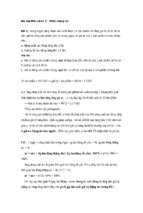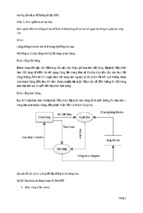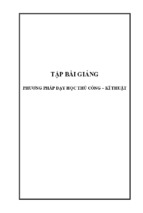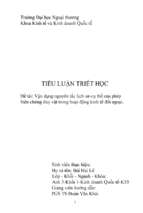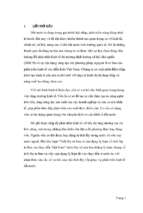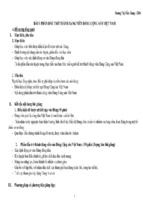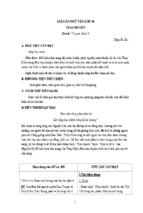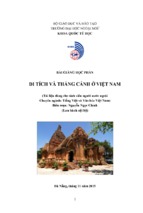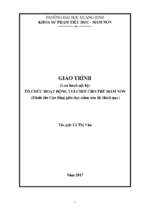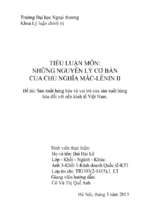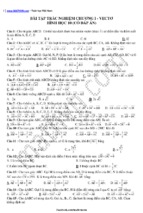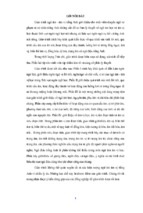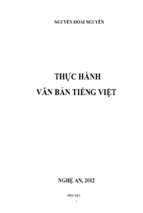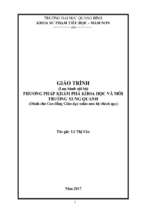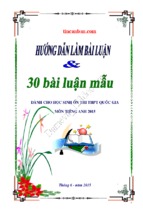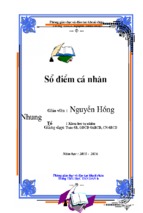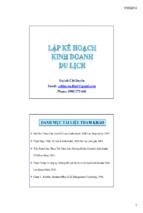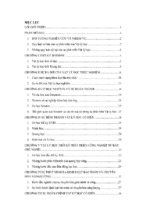Assembly Automation
and Product Design
Second Edition
MANUFACTURING ENGINEERING AND MATERIALS PROCESSING
A Series of Reference Books and Textbooks
SERIES EDITOR
Geoffrey Boothroyd
Boothroyd Dewhurst, Inc.
Wakefield, Rhode Island
1.
2.
3.
4.
5.
6.
7.
8.
9.
10.
11.
12.
13.
14.
15.
16.
17.
18.
Computers in Manufacturing, U. Rembold, M. Seth,
and J. S. Weinstein
Cold Rolling of Steel, William L. Roberts
Strengthening of Ceramics: Treatments, Tests, and Design
Applications, Harry P. Kirchner
Metal Forming: The Application of Limit Analysis,
Betzalel Avitzur
Improving Productivity by Classification, Coding, and Data
Base Standardization: The Key to Maximizing CAD/CAM
and Group Technology, William F. Hyde
Automatic Assembly, Geoffrey Boothroyd, Corrado Poli,
and Laurence E. Murch
Manufacturing Engineering Processes, Leo Alting
Modern Ceramic Engineering: Properties, Processing,
and Use in Design, David W. Richerson
Interface Technology for Computer-Controlled Manufacturing
Processes, Ulrich Rembold, Karl Armbruster,
and Wolfgang Ülzmann
Hot Rolling of Steel, William L. Roberts
Adhesives in Manufacturing, edited by Gerald L. Schneberger
Understanding the Manufacturing Process: Key to Successful
CAD/CAM Implementation, Joseph Harrington, Jr.
Industrial Materials Science and Engineering, edited by
Lawrence E. Murr
Lubricants and Lubrication in Metalworking Operations,
Elliot S. Nachtman and Serope Kalpakjian
Manufacturing Engineering: An Introduction to the Basic
Functions, John P. Tanner
Computer-Integrated Manufacturing Technology and Systems,
Ulrich Rembold, Christian Blume, and Ruediger Dillman
Connections in Electronic Assemblies, Anthony J. Bilotta
Automation for Press Feed Operations: Applications
and Economics, Edward Walker
19.
20.
21.
22.
23.
24.
25.
26.
27.
28.
29.
30.
31.
32.
33.
34.
35.
36.
37.
38.
39.
40.
41.
42.
43.
44.
Nontraditional Manufacturing Processes, Gary F. Benedict
Programmable Controllers for Factory Automation,
David G. Johnson
Printed Circuit Assembly Manufacturing, Fred W. Kear
Manufacturing High Technology Handbook, edited by
Donatas Tijunelis and Keith E. McKee
Factory Information Systems: Design and Implementation
for CIM Management and Control, John Gaylord
Flat Processing of Steel, William L. Roberts
Soldering for Electronic Assemblies, Leo P. Lambert
Flexible Manufacturing Systems in Practice: Applications,
Design, and Simulation, Joseph Talavage
and Roger G. Hannam
Flexible Manufacturing Systems: Benefits for the Low
Inventory Factory, John E. Lenz
Fundamentals of Machining and Machine Tools:
Second Edition, Geoffrey Boothroyd and Winston A. Knight
Computer-Automated Process Planning for World-Class
Manufacturing, James Nolen
Steel-Rolling Technology: Theory and Practice,
Vladimir B. Ginzburg
Computer Integrated Electronics Manufacturing and Testing,
Jack Arabian
In-Process Measurement and Control, Stephan D. Murphy
Assembly Line Design: Methodology and Applications,
We-Min Chow
Robot Technology and Applications, edited by Ulrich Rembold
Mechanical Deburring and Surface Finishing Technology,
Alfred F. Scheider
Manufacturing Engineering: An Introduction to the Basic
Functions, Second Edition, Revised and Expanded,
John P. Tanner
Assembly Automation and Product Design,
Geoffrey Boothroyd
Hybrid Assemblies and Multichip Modules, Fred W. Kear
High-Quality Steel Rolling: Theory and Practice,
Vladimir B. Ginzburg
Manufacturing Engineering Processes: Second Edition,
Revised and Expanded, Leo Alting
Metalworking Fluids, edited by Jerry P. Byers
Coordinate Measuring Machines and Systems, edited by
John A. Bosch
Arc Welding Automation, Howard B. Cary
Facilities Planning and Materials Handling: Methods
and Requirements, Vijay S. Sheth
45.
46.
47.
48.
49.
50.
51.
52.
53.
54.
55.
56.
57.
58.
59.
60.
61.
62.
63.
64.
65.
66.
Continuous Flow Manufacturing: Quality in Design
and Processes, Pierre C. Guerindon
Laser Materials Processing, edited by Leonard Migliore
Re-Engineering the Manufacturing System: Applying
the Theory of Constraints, Robert E. Stein
Handbook of Manufacturing Engineering, edited by
Jack M. Walker
Metal Cutting Theory and Practice, David A. Stephenson
and John S. Agapiou
Manufacturing Process Design and Optimization,
Robert F. Rhyder
Statistical Process Control in Manufacturing Practice,
Fred W. Kear
Measurement of Geometric Tolerances in Manufacturing,
James D. Meadows
Machining of Ceramics and Composites, edited by
Said Jahanmir, M. Ramulu, and Philip Koshy
Introduction to Manufacturing Processes and Materials,
Robert C. Creese
Computer-Aided Fixture Design, Yiming (Kevin) Rong
and Yaoxiang (Stephens) Zhu
Understanding and Applying Machine Vision:
Second Edition, Revised and Expanded, Nello Zuech
Flat Rolling Fundamentals, Vladimir B. Ginzburg
and Robert Ballas
Product Design for Manufacture and Assembly:
Second Edition, Revised and Expanded, Geoffrey Boothroyd,
Peter Dewhurst, and Winston Knight
Process Modeling in Composites Manufacturing,
edited by Suresh G Advani and E. Murat Sozer
Integrated Product Design and Manufacturing Using
Geometric Dimensioning and Tolerancing, Robert Campbell
Handbook of Induction Heating, edited by Valery I. Rudnev,
Don Loveless, Raymond Cook and Micah Black
Re-Engineering the Manufacturing System: Applying
the Theory of Constraints, Second Edition, Robert Stein
Manufacturing: Design, Production, Automation,
and Integration, Beno Benhabib
Rod and Bar Rolling: Theory and Applications, Youngseog Lee
Metallurgical Design of Flat Rolled Steels,
Vladimir B. Ginzburg
Assembly Automation and Product Design: Second Edition,
Geoffrey Boothroyd
Assembly Automation
and Product Design
Second Edition
Geoffrey Boothroyd
Boothroyd Dewhurst, Inc.
Wakefield, Rhode Island
Boca Raton London New York Singapore
A CRC title, part of the Taylor & Francis imprint, a member of the
Taylor & Francis Group, the academic division of T&F Informa plc.
Published in 2005 by
CRC Press
Taylor & Francis Group
6000 Broken Sound Parkway NW, Suite 300
Boca Raton, FL 33487-2742
© 2005 by Taylor & Francis Group, LLC
CRC Press is an imprint of Taylor & Francis Group
No claim to original U.S. Government works
Printed in the United States of America on acid-free paper
10 9 8 7 6 5 4 3 2 1
International Standard Book Number-10: 1-57444-643-6 (Hardcover)
International Standard Book Number-13: 978-1-57444-643-2 (Hardcover)
Library of Congress Card Number 2005041949
This book contains information obtained from authentic and highly regarded sources. Reprinted material is
quoted with permission, and sources are indicated. A wide variety of references are listed. Reasonable efforts
have been made to publish reliable data and information, but the author and the publisher cannot assume
responsibility for the validity of all materials or for the consequences of their use.
No part of this book may be reprinted, reproduced, transmitted, or utilized in any form by any electronic,
mechanical, or other means, now known or hereafter invented, including photocopying, microfilming, and
recording, or in any information storage or retrieval system, without written permission from the publishers.
For permission to photocopy or use material electronically from this work, please access www.copyright.com
(http://www.copyright.com/) or contact the Copyright Clearance Center, Inc. (CCC) 222 Rosewood Drive,
Danvers, MA 01923, 978-750-8400. CCC is a not-for-profit organization that provides licenses and registration for a variety of users. For organizations that have been granted a photocopy license by the CCC, a
separate system of payment has been arranged.
Trademark Notice: Product or corporate names may be trademarks or registered trademarks, and are used
only for identification and explanation without intent to infringe.
Library of Congress Cataloging-in-Publication Data
Boothroyd, G. (Geoffrey), 1932Assembly automation and product design / Geoffrey Boothroyd. -- 2nd ed.
p. cm. -- (Manufacturing engineering and materials processing ; 66)
Includes bibliographical references and index.
ISBN 1-57444-643-6 (alk. paper)
1. Assembly-line methods--Automation. I. Assembling machines. I. Title. II. Series
TS178.4.B66 2005
670.42'7--dc22
2005041949
Visit the Taylor & Francis Web site at
http://www.taylorandfrancis.com
Taylor & Francis Group
is the Academic Division of T&F Informa plc.
and the CRC Press Web site at
http://www.crcpress.com
Preface
Portions of this book are based on a book published in 1968 under the title
Mechanized Assembly by G. Boothroyd and A.H. Redford. In a later further
edition, titled Automatic Assembly by G. Boothroyd, C. Poli, and L.E. Murch,
the original material developed at the University of Salford in England was
updated with work carried out at the University of Massachusetts. In those days,
it was felt that manufacturing engineers and designers wished to learn about
automatic assembly as it appeared to provide a means of improving productivity
and competitiveness. Since 1978, I developed a subject that holds much greater
promise for productivity improvement and cost reduction, namely, design for
assembly (DFA). The DFA method has become widely used and has helped
numerous companies introduce competitive product designs.
This text, therefore, includes detailed discussions of design for assembly, and
the subject of assembly automation is considered in parallel with that of product
design.
The first step in considering automation of assembly should be careful
analysis of the product design for ease of automatic assembly. In addition,
analysis of the product for ease of manual assembly should be carried out in
order to provide the basis for economic comparisons of automation. Indeed, it
is often found that if a product is designed appropriately, manual assembly is
so inexpensive that automation cannot be justified. Thus, a whole chapter is
devoted to design for manual assembly. Another chapter is devoted to design
for high-speed automatic and robot assembly, and a third chapter deals with
electronics assembly.
This second edition includes, as an appendix, the popular Handbook of
Feeding and Orienting Techniques for Small Parts published at the University of
Massachusetts. This edition also includes the original data and coding systems
for product design for high-speed automatic and robot assembly also developed
at the University of Massachusetts. Finally, numerous problems have been added
and worked solutions to all the problems are available.
The book is intended to appeal to manufacturing and product engineers as
well as to engineering students in colleges and universities.
I wish to thank Dr. A.H. Redford for his kind permission to use material
published in our original book, Mechanized Assembly, and to Drs. C.R. Poli and
L.E. Murch for permission to include much of the material from the Handbook
of Feeding and Orienting Techniques for Small Parts, which we coauthored.
Finally, thanks go to Dr. P. Dewhurst for his contributions to our work on product
design for robot assembly.
Geoffrey Boothroyd
The Author
Geoffrey Boothroyd is Professor Emeritus of Industrial and Manufacturing Engineering at the University of Rhode Island in Kingston. The author or coauthor
of more than 100 journal articles, he is also the coauthor or coeditor of several
books, including Fundamentals of Machining and Machine Tools, Second Edition
(with W.A. Knight), Automatic Assembly (with C. Poli and L.E. Murch), and
Applied Engineering Mechanics (with C. Poli) (all titles published by Marcel
Dekker.). Additionally, Professor Boothroyd serves as coeditor for the Taylor &
Francis series Manufacturing Engineering and Materials Processing. A Fellow
of the Society of Manufacturing Engineers, he is a member of the National
Academy of Engineering, among other professional societies. Professor Boothroyd received Ph.D. (1962) and D.Sc. (1974) degrees in engineering from the
University of London, England. His numerous honors and awards include the
National Medal of Technology and the SME/ASME Merchant Medal.
Table of Contents
Chapter 1
Introduction......................................................................................1
1.1 Historical Development of the Assembly Process......................................2
1.2 Choice of Assembly Method.......................................................................6
1.3 Social Effects of Automation ....................................................................10
References ...........................................................................................................15
Chapter 2
Automatic Assembly Transfer Systems ........................................17
2.1 Continuous Transfer ..................................................................................17
2.2 Intermittent Transfer..................................................................................17
2.3 Indexing Mechanisms................................................................................23
2.4 Operator-Paced Free-Transfer Machine ....................................................27
References ...........................................................................................................28
Chapter 3
3.1
3.2
3.3
3.4
3.5
3.6
3.7
3.8
3.9
3.10
3.11
3.12
3.13
3.14
3.15
Automatic Feeding and Orienting — Vibratory Feeders .............29
Mechanics of Vibratory Conveying...........................................................29
Effect of Frequency ...................................................................................34
Effect of Track Acceleration .....................................................................34
Effect of Vibration Angle ..........................................................................35
Effect of Track Angle................................................................................35
Effect of Coefficient of Friction................................................................37
Estimating the Mean Conveying Velocity.................................................38
Load Sensitivity.........................................................................................42
Solutions to Load Sensitivity ....................................................................44
Spiral Elevators..........................................................................................46
Balanced Feeders.......................................................................................47
Orientation of Parts ...................................................................................47
Typical Orienting System..........................................................................48
Effect of Active Orienting Devices on Feed Rate ....................................54
Analysis of Orienting Systems..................................................................55
3.15.1 Orienting System ...........................................................................57
3.15.2 Method of System Analysis ..........................................................58
3.15.3 Optimization ..................................................................................61
3.16 Performance of an Orienting Device ........................................................63
3.16.1 Analysis .........................................................................................63
3.17 Natural Resting Aspects of Parts for Automatic Handling ......................69
3.17.1
3.17.2
3.17.3
3.17.4
Assumptions ..................................................................................70
Analysis for Soft Surfaces ............................................................71
Analysis for Hard Surfaces ...........................................................77
Analysis for Cylinders and Prisms with Displaced
Centers of Mass.............................................................................78
3.17.5 Summary of Results ......................................................................78
3.18 Analysis of a Typical Orienting System ...................................................78
3.18.1 Design of Orienting Devices.........................................................85
3.19 Out-of-Bowl Tooling .................................................................................87
References ...........................................................................................................89
Chapter 4
4.1
Automatic Feeding and Orienting — Mechanical Feeders..........91
Reciprocating-Tube Hopper Feeder ..........................................................92
4.1.1 General Features............................................................................94
4.1.2 Specific Applications .....................................................................94
4.2 Centerboard Hopper Feeder ......................................................................94
4.2.1 Maximum Track Inclination..........................................................94
4.2.2 Load Sensitivity and Efficiency ....................................................99
4.3 Reciprocating-Fork Hopper Feeder.........................................................100
4.4 External Gate Hopper Feeder..................................................................102
4.4.1 Feed Rate .....................................................................................102
4.4.2 Load Sensitivity and Efficiency ..................................................106
4.5 Rotary-Disk Feeder .................................................................................108
4.5.1 Indexing Rotary-Disk Feeder ......................................................108
4.5.2 Rotary-Disk Feeder with Continuous Drive ...............................109
4.5.3 Load Sensitivity and Efficiency ..................................................110
4.6 Centrifugal Hopper Feeder......................................................................110
4.6.1 Feed Rate .....................................................................................111
4.6.2 Efficiency .....................................................................................114
4.7 Stationary-Hook Hopper Feeder .............................................................115
4.7.1 Design of the Hook .....................................................................115
4.7.2 Feed Rate .....................................................................................118
4.8 Bladed-Wheel Hopper Feeder.................................................................119
4.9 Tumbling-Barrel Hopper Feeder .............................................................119
4.9.1 Feed Rate .....................................................................................121
4.10 Rotary-Centerboard Hopper Feeder ........................................................124
4.11 Magnetic-Disk Feeder .............................................................................124
4.12 Elevating Hopper Feeder.........................................................................125
4.13 Magnetic Elevating Hopper Feeder ........................................................126
4.14 Magazines ................................................................................................126
References .........................................................................................................130
Chapter 5
Feed Tracks, Escapements, Parts-Placement
Mechanisms, and Robots ............................................................131
5.1
Gravity Feed Tracks ................................................................................131
5.1.1 Analysis of Horizontal-Delivery Feed Track..............................132
5.1.2 Example .......................................................................................137
5.1.3 On/Off Sensors ............................................................................139
5.1.3.1 Theory ..........................................................................140
5.1.4 Feed Track Section ......................................................................143
5.1.5 Design of Gravity Feed Tracks for Headed Parts ......................146
5.1.5.1 Analysis ........................................................................146
5.1.5.2 Results ..........................................................................153
5.1.5.3 Procedure for Use of Figure 5.17 to Figure 5.20........158
5.2 Powered Feed Tracks ..............................................................................158
5.2.1 Example .......................................................................................160
5.3 Escapements ............................................................................................161
5.3.1 Ratchet Escapements ...................................................................162
5.3.2 Slide Escapements .......................................................................164
5.3.3 Drum Escapements......................................................................165
5.3.4 Gate Escapements........................................................................167
5.3.5 Jaw Escapements .........................................................................167
5.4 Parts-Placing Mechanisms.......................................................................168
5.5 Assembly Robots.....................................................................................171
5.5.1 Terminology.................................................................................171
5.5.2 Advantages of Robot Assembly..................................................172
5.5.3 Magazines ....................................................................................174
5.5.4 Types of Magazine Systems........................................................175
5.5.5 Automatic Feeders for Robot Assembly.....................................175
5.5.6 Economics of Part Presentation ..................................................178
5.5.7 Design of Robot Assembly Systems...........................................182
References .........................................................................................................186
Chapter 6
6.1
6.2
6.3
Performance and Economics of Assembly Systems...................187
Indexing Machines ..................................................................................187
6.1.1 Effect of Parts Quality on Downtime .........................................187
6.1.2 Effects of Parts Quality on Production Time..............................188
6.1.3 Effect of Parts Quality on the Cost of Assembly .......................190
Free-Transfer Machines...........................................................................195
6.2.1 Performance of a Free-Transfer Machine ...................................196
6.2.2 Average Production Time for a Free-Transfer Machine.............200
6.2.3 Number of Personnel Needed for Fault Correction ...................200
Basis for Economic Comparisons of Automation Equipment ...............201
6.3.1 Basic Cost Equations...................................................................202
6.4
Comparison of Indexing and Free-Transfer Machines...........................204
6.4.1 Indexing Machine ........................................................................204
6.4.2 Free-Transfer Machine ................................................................205
6.4.3 Effect of Production Volume.......................................................205
6.5 Economics of Robot Assembly...............................................................207
6.5.1 Parts Presentation ........................................................................208
6.5.2 Profile of Typical Candidate Assembly ......................................211
6.5.3 Single-Station Systems................................................................212
6.5.3.1 Equipment Costs ..........................................................212
6.5.3.2 Personnel Costs ............................................................213
6.5.3.3 Parts Quality.................................................................213
6.5.3.4 Basic Cost Equation.....................................................214
6.5.4 Multistation Transfer Systems.....................................................215
6.5.4.1 Equipment Costs ..........................................................215
6.5.4.2 Cost Equation ...............................................................216
References .........................................................................................................217
Chapter 7
7.1
7.2
7.3
Design for Manual Assembly......................................................219
Introduction..............................................................................................219
Where Design for Assembly Fits in the Design Process .......................219
General Design Guidelines for Manual Assembly .................................221
7.3.1 Design Guidelines for Part Handling..........................................221
7.3.2 Design Guidelines for Insertion and Fastening ..........................222
7.4 Development of a Systematic DFA Analysis Method............................227
7.5 DFA Index ...............................................................................................229
7.6 Classification System for Manual Handling ...........................................230
7.7 Classification System for Manual Insertion and Fastening....................233
7.8 Effect of Part Symmetry on Handling Time...........................................236
7.9 Effect of Part Thickness and Size on Handling Time ............................237
7.10 Effect of Weight on Handling Time........................................................239
7.11 Parts Requiring Two Hands for Manipulation........................................240
7.12 Effects of Combinations of Factors ........................................................240
7.13 Threaded Fasteners ..................................................................................240
7.14 Effects of Holding Down ........................................................................242
7.15 Problems with Manual Assembly Time Standards.................................242
7.16 Application of the DFA Method .............................................................244
7.16.1 Results of the Analysis................................................................248
7.17 Further General Design Guidelines ........................................................251
References .........................................................................................................254
Chapter 8
Product Design for High-Speed Automatic
Assembly and Robot Assembly ..................................................257
8.1
8.2
8.3
8.4
8.5
8.6
8.7
8.8
8.9
8.10
Introduction..............................................................................................257
Design of Parts for High-Speed Feeding and Orienting ........................258
Example ...................................................................................................263
Additional Feeding Difficulties ...............................................................265
High-Speed Automatic Insertion.............................................................266
Example ...................................................................................................269
Analysis of an Assembly.........................................................................271
General Rules for Product Design for Automation ................................272
Design of Parts for Feeding and Orienting.............................................276
Summary of Design Rules for High-Speed Automatic Assembly .........280
8.10.1 Rules for Product Design ............................................................280
8.10.2 Rules for the Design of Parts......................................................280
8.11 Product Design for Robot Assembly ......................................................281
8.11.1 Summary of Design Rules for Robot Assembly ........................287
References .........................................................................................................289
Chapter 9
Printed-Circuit-Board Assembly .................................................291
9.1
9.2
9.3
9.4
9.5
9.6
Introduction..............................................................................................291
Terminology.............................................................................................291
Assembly Process for PCBs....................................................................292
SMD Technology.....................................................................................301
Estimation of PCB Assembly Costs .......................................................302
Worksheet and Database for PCB Assembly Cost Analysis ..................303
9.6.1 Instructions ..................................................................................303
9.7 PCB Assembly — Equations and Data for Total Operation Cost .........305
9.7.1 Manual .........................................................................................306
9.7.2 Autoinsertion Machine ................................................................306
9.7.3 Robot Insertion Machine.............................................................306
9.8 Glossary of Terms ...................................................................................308
References .........................................................................................................310
Chapter 10 Feasibility Study for Assembly Automation...............................311
10.1 Machine Design Factors to Reduce Machine Downtime
Due to Defective Parts ............................................................................312
10.2 Feasibility Study......................................................................................313
10.2.1 Precedence Diagrams ..................................................................314
10.2.2 Manual Assembly of Plug...........................................................317
10.2.3 Quality Levels of Parts................................................................318
10.2.4 Parts Feeding and Assembly .......................................................319
10.2.5 Special-Purpose Machine Layout and Performance...................321
10.2.5.1 Indexing Machine.........................................................321
10.2.5.2 Free-Transfer Machine.................................................324
10.2.6 Robot Assembly of the Power Plug............................................326
References .........................................................................................................332
Problems...........................................................................................................333
Appendix A Simple Method for the Determination of the
Coefficient of Dynamic Friction ...............................................363
A.1 The Method .............................................................................................363
A.2 Analysis ...................................................................................................365
A.3 Precision of the Method ..........................................................................366
A.4 Discussion................................................................................................366
Reference...........................................................................................................368
Appendix B Out-of-Phase Vibratory Conveyors ...........................................369
B.1 Out-of-Phase Conveying .........................................................................370
B.2 Practical Applications..............................................................................372
Reference...........................................................................................................373
Appendix C Laboratory Experiments ............................................................375
C.1 Performance of a Vibratory-Bowl Feeder...............................................375
C.1.1 Objectives ....................................................................................375
C.1.2 Equipment....................................................................................375
C.1.3 Procedure .....................................................................................375
C.1.4 Theory..........................................................................................376
C.1.5 Presentation of Results ................................................................378
C.2 Performance of a Horizontal-Delivery Gravity Feed Track ...................379
C.2.1 Objectives ....................................................................................379
C.2.2 Equipment (Objective 1) .............................................................379
C.2.3 Theory (Objective 1) ...................................................................380
C.2.4 Procedure (Objective 1)...............................................................381
C.2.5 Results (Objective 1) ...................................................................381
C.2.6 Equipment (Objective 2) .............................................................381
C.2.7 Theory (Objective 2) ...................................................................382
C.2.8 Procedure (Objective 2)...............................................................382
C.2.9 Results (Objective 2) ...................................................................383
C.2.10 Conclusions..................................................................................383
Appendix D Feeding and Orienting Techniques for Small Parts..................385
D.1 Coding System ........................................................................................385
D.1.1 Introduction to the Coding System .............................................386
D.1.2 Coding Examples ........................................................................390
D.1.3 Sample Parts for Practice ............................................................392
D.1.4 Analysis of the Coding of the Sample Parts ..............................393
D.1.5 Coding System for Small Parts...................................................395
D.2 Feeding and Orienting Techniques .........................................................408
D.3 Orienting Devices for Vibratory-Bowl Feeders ......................................474
D.4 Nonvibratory Feeders ..............................................................................492
Nomenclature...................................................................................................501
Index .................................................................................................................507
1 Introduction
Since the beginning of the 19th century, the increasing need for finished goods
in large quantities, especially in the armaments industries, has led engineers to
search for and to develop new methods of manufacture or production. As a result
of developments in the various manufacturing processes, it is now possible to
mass-produce high-quality durable goods at low cost. One of the more important
manufacturing processes is the assembly process that is required when two or
more component parts are to be secured together.
The history of assembly process development is closely related to the history
of the development of mass-production methods. The pioneers of mass production
are also the pioneers of modern assembly techniques. Their ideas and concepts
have brought significant improvements in the assembly methods employed in
high-volume production.
However, although many aspects of manufacturing engineering, especially
the parts fabrication processes, have been revolutionized by the application of
automation, the technology of the basic assembly process has failed to keep pace.
Table 1.1 shows that, 35 years ago in the U.S., the percentage of the total labor
force involved in the assembly process varied from about 20% for the manufacture
of farm machinery to almost 60% for the manufacture of telephone and telegraph
equipment. Because of this, assembly costs often accounted for more than 50%
of the total manufacturing costs.
TABLE 1.1
Percentage of Production Workers Involved in
Assembly
Industry
Percentage of Workers
Involved in Assembly
Motor vehicles
Aircraft
Telephone and telegraph
Farm machinery
Household refrigerators and freezers
Typewriters
Household cooking equipment
Motorcycles, bicycles, and parts
45.6
25.6
58.9
20.1
32.0
35.9
38.1
26.3
Source: From 1967 Census of Manufacturers, U.S. Bureau of the
Census.
1
- Xem thêm -

